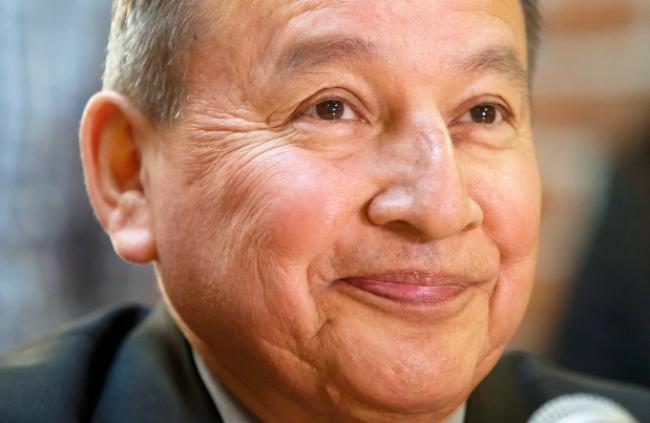Articles Menu

We recently travelled to northeastern B.C.’s Peace Valley to meet with First Nations members and local landowners camped out at a remote historic fort site slated for destruction by the Site C dam.
The Treaty 8 Stewards of the Land told media they’re willing to risk arrest to stop BC Hydro from clear cutting forests around Rocky Mountain Fort, on the west side of Moberly River. The site, selected by explorer Alexander Mackenzie as mainland B.C.’s first trading post, is on Treaty 8 First Nations’ traditional territory.
As we sat around the fire beneath old-growth spruce and cottonwood trees, elders and community members explained that their action is not merely another environmental protest. They argued passionately that they are land stewards camped out in the forest despite bitterly cold weather to exercise their treaty rights, such as collecting medicinal plants, making prayers and tending nearby traplines.
When the Dunne-Zaa people joined Treaty 8 in 1900, a solemn and binding promise guaranteed their ability to continue to participate in these and other traditional activities such as hunting, trapping and fishing. The treaty explicitly guaranteed the Dunne-Zaa would be able to continue traditional practices “for as long as the sun shines, the rivers flow and the grass grows.” In return for the necessary consent to take up these beautiful, productive lands (the Site C flood zone includes prime agricultural land and is teeming with wild game), the Crown solemnly promised that practices Treaty 8 First Nations have continuously maintained for at least 11,000 years would be allowed to continue without forced interference or forced dependency on the Crown.
Yet since signing Treaty 8, First Nations in northeastern B.C. have seen their lands irrevocably damaged by logging, oil and gas extraction, mines, dams and other resource development. Research by the David Suzuki Foundation revealed that nearly two-thirds of their traditional territories have been affected by some form of industrial development, leaving little intact habitat for wildlife like moose and caribou, which have sustained communities for millennia.